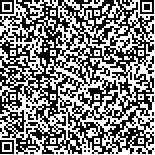下载中心
优秀审稿专家
优秀论文
相关链接
摘要

盐沼是中高纬度海岸带区域生产力极高的生态系统,不同种类盐沼植被提供的生态服务功能具有明显差异。围垦、互花米草入侵、海平面上升等人类活动和自然要素复合作用,导致中国海岸带盐沼植被结构和空间分布快速变化。现有光学遥感方法在海岸带区域受潮汐、云雾干扰严重;高光谱、LiDAR等数据方法难以大范围高时效获取盐沼植被信息。本文以长江河口为研究区域,提出了基于植被物候期多时相雷达后向散射特征优选的海岸带盐沼植被分类方法。采用Sentinel-1雷达数据,分析盐沼、潮间森林沼泽、光滩和水体的雷达后向散射全年时序特征。结合盐沼植被物候特点,基于分离阈值法计算典型盐沼植被月际后向散射特征间分离度。根据最优时序雷达分类特征,采用随机森林方法获取盐沼植被种类、结构和空间分布。结果表明:(1)全年VH极化后向散射均值能较好将水体、光滩、潮间森林沼泽与盐沼区分。(2)4月VV极化、11月VH极化与3月VV极化后向散射均值分别为海三棱藨草/藨草、互花米草与芦苇的最优分类特征。(3)基于年际和月际时序雷达最优特征和随机森林分类算法获得的盐沼植被总体分类精度达到85%,Kappa系数为0.80。相较光学遥感,雷达遥感影像可有效获取盐沼植被年际、月际时序雷达后向散射特征,准确得到海岸带盐沼植被空间动态,在海岸带研究中具有较好的应用潜力,可为海岸带生物多样性保护、湿地生态系统功能提升与生态环境管理等提供重要技术手段和数据支撑。
Salt marshes are highly productive ecosystems in the mid-high latitude coastal zone, and the ecological service functions provided by different types of salt marsh vegetation are significantly different. The combination of human activities and natural factors such as reclamation, invasion of Spartina alterniflora, and sea level rise has led to rapid changes in the structure and spatial distribution of salt marshes in China’s coastal zone. Existing optical methods are subject to tidal and cloud interference in the coastal zone. Obtaining large-scale and high-efficiency salt marsh vegetation information using hyperspectral or LiDAR data is difficult.This study took the Yangtze River estuary as the research area and proposed a coastal salt marsh vegetation classification method based on vegetation phenology and multi-temporal radar backscatter feature. Sentinel-1 radar data were used to analyze the annual time-series characteristics of radar backscattering in salt marshes, intertidal forest swamps, mudflats, and water bodies. Based on the phenological characteristics of salt marsh vegetation, the separability between the monthly backscattering characteristics of a typical salt marsh was calculated based on the separation threshold method. According to the optimal time-series radar classification characteristics, the random forest method was used to obtain the species, structure, and spatial distribution of salt marsh vegetation.Results showed the following. (1) The average value of VH polarization backscattering can distinguish water bodies, light beaches, intertidal forest swamps, and salt marshes well. (2) The mean backscattering values of VV polarization in April, VH polarization in November, and VV polarization in March were the optimal characteristics of Scirpus × mariqueter, Spartina alterniflora, and Phragmites australis. (3) Obtained by the optimal characteristics and random forest classification algorithm, the general classification accuracy of salt marsh vegetation was 85% with a Kappa coefficient of 0.80.Compared with optical remote sensing, radar images can effectively obtain the inter-annual and inter-monthly time series backscattering characteristics of salt marsh vegetation, and accurately obtain the spatial dynamics of coastal salt marsh vegetation. This study has shown the application potential of radar images in coastal zone research and provides important technical means and data support for coastal biodiversity conservation, wetland ecosystem function enhancement, and ecological environment management.

